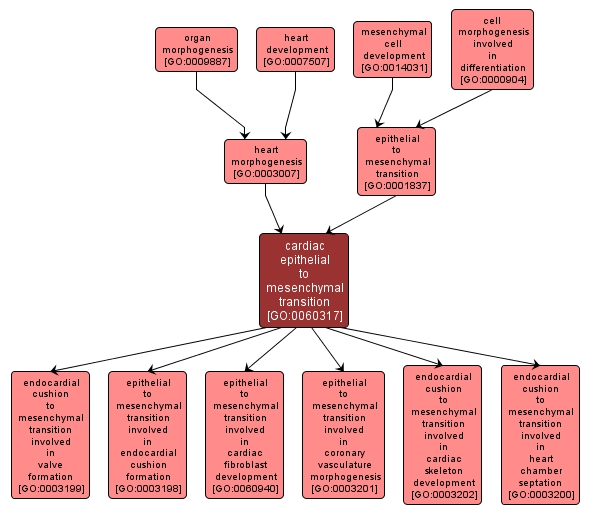GO TERM SUMMARY
|
| Name: |
cardiac epithelial to mesenchymal transition |
| Acc: |
GO:0060317 |
| Aspect: |
Biological Process |
| Desc: |
A transition where a cardiac epithelial cell loses apical/basolateral polarity, severs intercellular adhesive junctions, degrades basement membrane components and becomes a migratory mesenchymal cell. |
Synonyms:
- heart epithelial to mesenchymal transition
|
|

|
INTERACTIVE GO GRAPH
|














